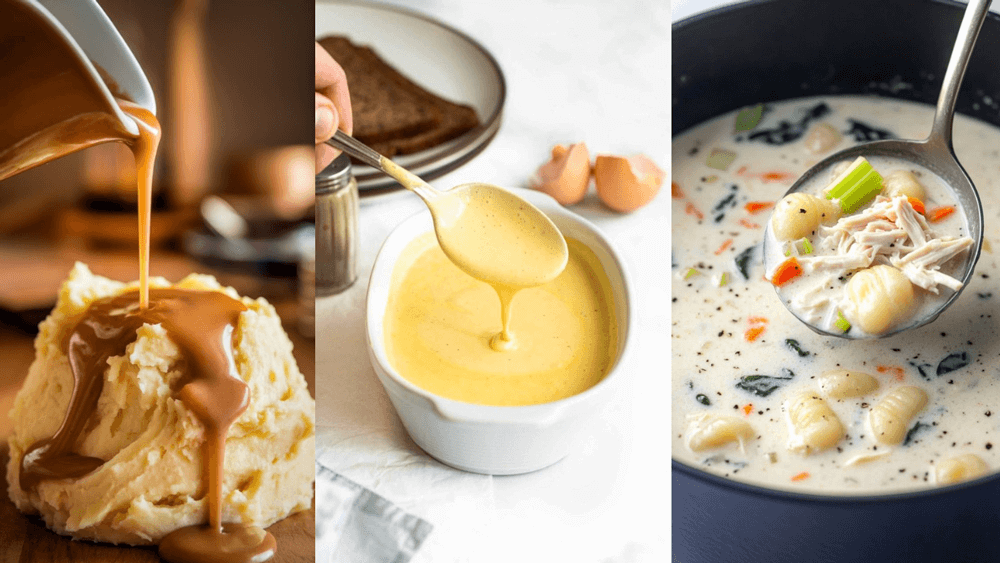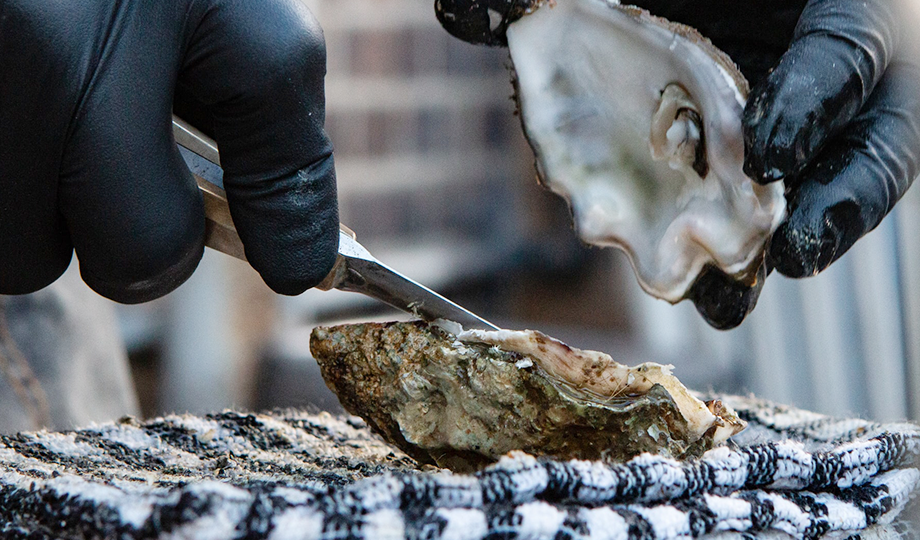Easy Ways to Thicken Gravies, Sauces & Soups

It is undeniable that the thick texture of gravies, sauces and soups is obtained from the thickening agent used. When we talk about thickening agents, cornstarch usually becomes the top of mind. However, there are still other ingredients that can be used as alternatives to cornstarch. Check out some tips below!
1. Roux
Roux is another French word for a mixture of fat cooked with wheat flour in equal proportions. Recommended fats are oil, butter, extra virgin olive oil or vegetable oil. Roux can be used to thicken meat sauces, savory sauces, stews, or soups by stirring the flour and fat mixture in a hot pan until it starts to foam, then remove from heat and set aside. Let it cool for a while so that when mixed with gravies, sauces or soups, the texture does not break. Once mixed, bring to a boil and cook until done.
2. Beurre Manie
Beurre manie is French for kneaded butter. The way to make it is by kneading butter and flour using a fork or fingers until it becomes soft dough. After that, the dough will be formed into teaspoon-sized balls, then the balls will be added to gravies, sauces or soups while being cooked gradually (while stirring) to get a thick texture.
3. Reducing Liquids Technique
The thickening process by reducing liquids can be done by cooking slowly until boiling. In this case, when the gravies, sauces or soups have reached boiling point, the liquid will evaporate and produce a thick and more concentrated texture. This reduction process will also increase the sweet, sour and salty taste, so seasoning adjustments are needed when the gravies, sauces or soups have completely reduced and thickened.
4. Gelatin
Gelatin is a protein product obtained by extracting collagen from cartilage or animal skin, such as cows, fish and pigs that are dried and broken into fine granules. How to thicken gravies, sauces or soups using gelatine is as follows:
(a) Dissolve the gelatin powder with warm water in a ratio of 2:1 (2 Warm Water and 1 Gelatin)
(b) Let’s stand for a few minutes
(c) Pour the gelatin liquid into the boiling gravies, sauce or soup, stir well.
(d) Remove and leave at room temperature
This thickening method with gelatin is very suitable for cold dishes, such as cold soup, because gelatine functions as a versatile emulsifier that helps combine two liquids that are usually separated, such as fat and water in gravies, sauces or soups that tend to separate when cold. Emulsifiers work by stabilizing the mixture which produces a smooth and homogeneous texture.
In addition to powdered gelatin, another alternative is to use sheet gelatin by soaking the gelatin sheets in ice water for 5 minutes, remove, then squeeze. After that, the gelatin sheet can be mixed into gravies, sauces or soups, stir until thickened, just like the gelatine powder process.
5. Egg Yolks
The thickening method with egg yolk can be done by tempering the egg yolk mixture. Tempering is the process of equalizing the temperature of the 2 raw materials to be mixed. The method is as follows:
(a) Take a few spoonfuls of boiling gravies, sauces, or soups to mix with the egg yolks in a separate container (you can use a bowl), then stir until evenly mixed.
(b) After that, put the mixture back into the gravies, sauce or soup that is being cooked.
This method is done to prevent unwanted clots from forming.
6. Pure of Some Based Ingredients
This time, it is thickened with a natural method. The method is to take some ingredients found in gravies, sauces or soups, such as potatoes, carrots or nuts. Then, put them in a blender and purée them. After that, put them back into the soup that is being cooked and stir until evenly mixed. This method is best done before adding animal protein to the gravies, sauces or soups and then cook until it reaches the desired thickness.
7. Xanthan Gum
Xanthan Gum is a flavorless thickener that uses natural ingredients. Xanthan Gum is produced from the fermentation of sugar by the bacteria Xanthomonas campestris that grows in broccoli and cauliflower. The dosage of Xanthan Gum as an effective thickener is with a ratio of 0.1% -0.3% Xanthan Gum of the total weight of the ingredients. To increase the thickness, you can use Xanthan Gum with a usage ratio of up to 1% of the total weight of the ingredients. How to apply it is Take a separate container and take a few spoons of gravies, sauce or soup to mix with Xanthan Gum, then pour the liquid mixture little by little into the gravies, sauce, or soup that is being cooked, stir well until it reaches the desired thickness, then lift and serve.
8. Potato Flakes (Potato Flakes)
Potato Flakesis a mashed and dried potato flakes. Potato flakes are also a natural ingredient that can be used as a thickener. The thickening method with potato flakes tends to be fast, because the application method is easy, namely as follows: add potato flakes powder to gravies, sauces or soups that are slowly boiling, then stir until smooth and reach the desired thickness texture. However, it should be noted that this method is not recommended for clear or light soup dishes because potato crumbs can make the soup cloudy. Another alternative is to mix potato flakes into cold water and mix into gravies, sauces or soups, stir until thickened.
References:
Bob's Red Mill. 2021. How to Use Xanthan Gum. December 16, 2021.
Cape Crystal Brands Blog. 2023. Gelatin: Homemade Food Thickener Guide. September 23, 2023
Justcookwithmichael. Tips on how to thicken soups, stews and sauces.

